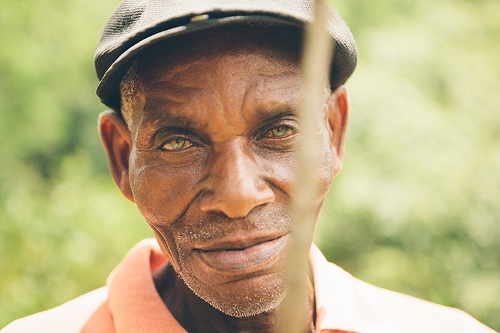
I recently took a walk through a shantytown on the outskirts of Santo Domingo, Dominican Republic. Plant With Purpose focuses on rural development, so I hadn't visited a place like this in some years -- tin and cinderblock shacks clinging to hillsides so steep no one but squatters would choose to live there.
As I talked with people, I asked how they happened to settle in that spot. Without exception, the answer came back that they'd been farmers who came in search of opportunities. They had lived in remote mountain villages and were tired of being hungry -- tired of working hard all year for just one payday that most often fell short. As one man put it, there is no money in farming, but in Santo Domingo at least his kids had some opportunity for a better tomorrow.
This is not an isolated occurrence. There are 870 million chronically hungry people in the world, and the vast majority are the rural poor. Ironically, many of them are farmers, growing their own food. These are the poorest of the poor, ranking lower on virtually every measurement of human well being than the urban poor.
Years ago, as Plant With Purpose sought to address extreme poverty, we decided to get at the root causes of poverty in developing countries. This took us upstream from cities to the exhausted farms that people were abandoning. In those rural villages, we were startled to discover an intimate connection between deforestation and extreme poverty. Around the world, the rural poor have two assets they depend on for survival: the soil they farm and the rain that falls on it. Deforestation robs the land of both those assets.
Tree roots hold the soil in place, while the forest canopy and leaf litter on the ground mitigate the impact of rain as it hits the soil, allowing water to soak in rather than run off. Without trees, rainfall cannot infiltrate the soil. That means water tables are lowered, streams that once flowed year-round become seasonal, and wells dry up. The rain itself actually becomes less reliable.
Paradoxically, it is the rural poor who are cutting down a lot of those trees. Yet it is impossible to blame them for making this choice. A Haitian farmer once told me, "Either this tree must die, or I die in its place." As poor families grow increasingly desperate to provide for their children, they have little choice but to clear new land for agriculture or turn the trees into charcoal to sell for cash.
Poverty and deforestation form a vicious cycle that must be addressed simultaneously. The beauty is that by addressing both issues together, this vicious cycle can become a virtuous cycle of economic opportunity and environmental restoration. Reforestation can bring health back to watersheds. On the farms, nitrogen-fixing trees and green manures can put nutrients back in the soil. As soil fertility is restored, farmers' crop productivity increases. This means food for families and income from sale of the surplus. With increased income, parents can cover costs related to children's school fees, family health care and other household needs.
A few days after I walked through that shantytown, I was in a rural village where I visited a Village Savings and Loan Association that Plant With Purpose helped start to combat poverty in the community. Through this savings-led approach to microfinance, association members are now able to safely save their money and access loans for businesses or to invest in their farms. One group now manages over $12,000 U.S., and the members have expressed astonishment at their own power. In addition to savings and loan groups, local churches are being mobilized to serve their communities. They are addressing other areas of need by using their local resources.
With Plant With Purpose's assistance, their farms have become more productive and sustainable. Using a system called agroforestry, farmers are planting trees and crops together, working with the land, instead of against it. They proudly showed off their abundant fields full of fruit and a diversity of crops ripe for harvest. Their smiles were contagious and their hope, palpable.
Here, they had found opportunity for a better tomorrow. And they had the dignity of knowing they were the ones providing for their children.
After more than 20 years of working with organizations focused on alleviating poverty, I know for sure there are no quick-fix solutions. But I've also come to know that any long-term solutions to poverty must address its root causes.
Photos by Shaun Boyte.
This blog is part of our #GivingTuesday series, produced by The Huffington Post and the teams at InterAction, 92nd Street Y, United Nations Foundation, and others. Following Black Friday and Cyber Monday, #GivingTuesday -- which takes place for the first time on Tuesday, November 27 -- is a movement intended to open the holiday season on a philanthropic note. Go to www.givingtuesday.org to learn more and get involved.

